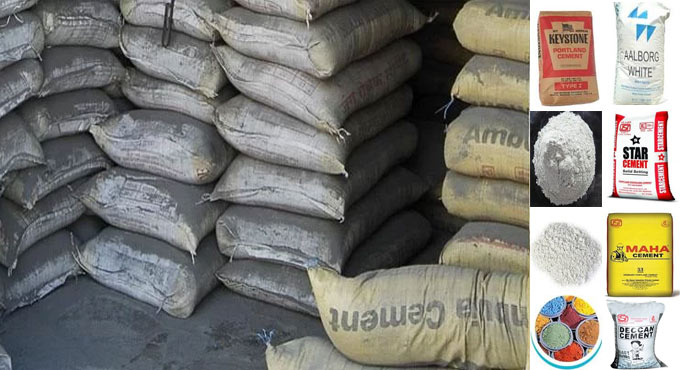
11 types of cements in construction
The cement is formed with the following process :-
One mixture of calcareous (calcium) and clay material are burnt at an extreme temperature and consequently the clinker is grinded to take the shape of a fine powder.
Types of cement are - Besides, common Portland cement, various types of cements exist in the market. Given below the details of cements types :-
(i) White cement: This type of cement does not contain iron, manganese and iron oxides. To form this type of cement, oil is placed rather than coal burn. White cement is suitable for surface treatment, plastering, decorative work, etc. White cement is used in swimming pool to repair beads and glazed tiles.
(ii) Color Cement: The cements of the popular colors are formed with the amalgamation of mixing pigments with traditional cement. Chlorine dioxide is used to make the color green. Cobalt is used for blue color. Iron oxide with another proportion creates brown, red or yellow color. If manganese dioxide is used, the color of cement becomes black or brown. These cements are mostly found for floor finishing, walls, window sills, roofs, etc.
(iii) Quick setting cement: Quick setting cement is formed by minimizing the proportion of gypsum and providing a least amount of aluminum sulfate throughout cement production. If grinding is done properly, it includes quick setting properties. This cement will be formed within 5 minutes once the water is added and transformed to a rigid matter in 30 minutes. This cement is generally applied to place concrete under static or slowly running water.
(iv) Rapid hardened cement: This cement is formed by raising the lime content and combustion at high temperature throughout cement production. Fine grinding is also essential. Although the initial and final setting times of this cement are equivalent to Portland cement, it acquires strength in initial stage. This feature facilitates eliminating formwork initially and accelerating speed in building activity.
(v) Low Heat cement: In large concrete structures like dam construction, heat is generated because of hydration of cement and it is easily dispersed. It results in creating cracks. Under this situation, it will be useful to apply low temperature cement. This cement comprises of a low percentage (5%) of tricalcium aluminate (C3A) and a greater percentage (46%) of calcium silicate (C2S).
(vi) Pozzulana Cement: Pozzolana is produced from scales and many types of clay. Here, the content of cement pozzolana is 10 to 30%. It withstands sulphate action. It generates fewer amount of heat throughout the configuration. It produces more water. In this types of cement, the tensile strength is superior, but the compression force is weak. It is suitable for mass concrete work. It is also applied in works of wastewater line and structures which are vulnerable to the actions of the water.
(vii) Expanding Cement: This cement expands once it is arranged. This property is obtained with the inclusion of a spreading agent like a sulfoaluminate and a stabilizing agent in ordinary cement. It?s utilized for this filling of cracks in concrete structures.
(viii) High Alumina Cement: It is formed with calcination of a mixture of lime and bauxite. It has good resistance capacity against sulphate and acid attack. It gains full strength within 24 hours of adding water. It is effective for waterworks.
(ix) Blast furnaces Cement: This type of cement is produced by wiping cement clinker with about 60 to 65 percent slurry. It has similarity with ordinary cement but is cost-effective since it applies waste product. This cement is lasted for a long time but slowly acquires strength and therefore needs longer curing times.
(X) Acid Resistant Cement: This cement is formed by amalgamating acetic resistant like quartz, quartzite, sodium silicate or solvent glass. This cement acid contains good resistance strength against water. It is normally utilized for building up the chemical factories.
(xi) Sulfate Resistant Cement: This type of cement is formed by keeping the tricycles aluminum percentage under C3A and five percent in general cement. It is applicable for building up the structures which are damaged by alkaline conditions; as for instance canals, culverts Etc.


